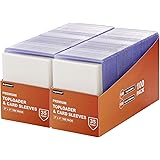Introduction
The landscape of digital marketing is ever-evolving. More so often these in these few past years. This is due to the ever-changing consumer behavior and the advent of new technologies like AI becoming more prevalent in use. These, amongst many other factors, make selecting the right marketing software challenging.
In 2024, choosing the right tools for marketing can be a game-changer for businesses of all sizes. With a plethora of options available, making an informed choice requires a deep understanding of your needs, the software’s capabilities, and how they align with your marketing and overall business goals.
Table of Contents

1: Understanding the Marketing Software Landscape in 2024
1.1. The Evolution of Marketing Software
To appreciate the current state of marketing software, it’s essential to look at how it has evolved over the years. From basic email marketing tools to sophisticated platforms offering AI-driven analytics, the journey has been remarkable. Today’s marketing software is not just a tool; it’s a comprehensive solution that can drive strategy, execution, and analysis.
1.2. Key Features to Look for in Modern Marketing Software
Today’s marketing software is packed with features. But the first question to ask yourself is: which ones are truly essential for your business? Are you looking for capabilities like automation, analytics, customer relationship management (CRM), e-commerce or other integration, and multi-channel support? These features are very crucial in a landscape where efficiency, data-driven decisions, and customer engagement are key.
2: Identifying Your Marketing Needs
2.1. Assessing Your Business Size and Industry
The first step in choosing marketing software is understanding how your business size and industry shape your marketing needs. An individual or a small business might prioritize ease of use and cost-effectiveness, while a larger enterprise might need more robust, scalable solutions.
2.2. Defining Your Marketing Goals
Whether it’s increasing brand awareness, generating leads, or driving sales, your goals will guide you in choosing a tool that best meets your objectives. Clear marketing goals are the cornerstone of selecting the right software.
Clear marketing goals are the cornerstone of selecting the right software. This section delves into the importance of defining these goals and how they guide the selection process.
Short-term vs Long-term Goals
Understanding the difference between short-term and long-term goals is crucial in choosing marketing software. While some tools may offer quick wins, others are designed for long-term strategy and growth.
Aligning Software Features with Business Objectives
Your marketing goals should not exist in isolation. The right marketing software should seamlessly align with your business objectives. It’s not just about the features it offers but how those features can help you achieve your specific marketing goals.
This alignment ensures that your marketing efforts contribute directly to the broader goals of your company, such as increasing market share, entering new markets, or launching new products.
Understanding the Importance of Goal Setting
- The first step toward a focused and effective marketing strategy is setting clear, and measurable marketing goals.
- Defining your marketing goals helps in creating a roadmap for your marketing efforts. It ensures that every action taken is purposeful and aligned with what you aim to achieve, whether it’s increasing brand visibility, generating leads, boosting sales or simply building a strong social media presence.
Types of Marketing Goals
- Marketing goals can vary widely, ranging from increasing website traffic to boosting customer engagement.
- Common goals include:
- Increasing brand awareness
- Generating high-quality leads
- Improving customer retention
- Driving sales,
- Enhancing customer engagement,
- Building a strong social media presence.
- Each goal requires different tools and strategies. This, eventually, influences the type of marketing software you choose.
Setting SMART Goals
- Marketing goals should be SMART: Specific, Measurable, Achievable, Relevant, and Time-bound. This makes them effective.
- Applying the SMART framework ensures that your goals are clear and attainable within a specific timeframe. A good example would be: instead of a vague goal like ‘drive up sales,’ a SMART goal would be ‘drive up sales by 30% in the next six months.’
Analyzing and Revising Goals
- Regular analysis and revision of your marketing goals are crucial as your business and the market evolve.
- The marketing landscape is dynamic, and what works today might not work tomorrow. Regularly reviewing and adjusting your goals ensures that your marketing strategy remains relevant and effective.
Impact of Goals on Marketing Software Selection
- The marketing software you choose should have the capability to support and enhance the achievement of your specific marketing goals.
- For instance, if your goal is to improve customer engagement, look for software with strong CRM and social media integration. If your focus is on lead generation, prioritize software with advanced lead capture and nurturing capabilities.
In summary, defining your marketing goals is a critical step in choosing the right marketing software. It provides a clear direction for your marketing efforts and ensures that the software you select can effectively support and enhance these efforts. By setting SMART goals that align with your business objectives and regularly revising them, you can ensure that your marketing strategy remains effective and responsive to the changing business environment.
3: Use Case Scenarios
3.1. Small Business Use Cases
For individuals or small businesses, marketing software can be a powerful tool to level the playing field. Your organization can benefit from features like automated email marketing, social media management, and basic analytics to enhance its marketing efforts without needing a large team. In this age of efficiency, cost management, and “soloenterprenuership” a powerful, yet cost-effective tool is a requirement in any business’s tool chest.
3.2. Enterprise-Level Use Cases
Large enterprises require robust marketing solutions that can scale with their equally large operations. Features like advanced analytics, AI-driven insights, and integration with various business systems are typically essential for these larger organizations. Integrations both internal and external are very crucial for any modern-day business operation.
4: Navigating Reviews and Ratings
4.1. Understanding User Reviews
User reviews offer invaluable insights but require careful analysis to be truly useful. Look for patterns in feedback, paying attention to both the positives and negatives mentioned by users.
4.2. Professional and Industry Reviews
Professional and industry reviews can provide a broader perspective on the software’s performance and reliability. These reviews often offer a more detailed analysis compared to user reviews.
5: Learning from Case Studies
5.1. Success Stories
Examining success stories helps in understanding the practical application and effectiveness of marketing software. These case studies can provide a glimpse into how different businesses have leveraged the software to achieve their goals. Good and reliable platforms will have examples of case studies on their websites. These will be real-life customer stories about their experiences with the tool or platform.
5.2. Lessons from Failures
Analyzing failures can be just as informative as success stories in choosing the right software. Understanding where and why a particular tool fell short can help in avoiding similar pitfalls. A lot of review websites will give a guide on whether to consider or avoid a specific tool. However, be wary of certain reviews, both positive and negative as they may be malicious misleading. The best way to get around this is to contact the platform sales team to arrange a demo or sign up for a trial.
6: Experiencing the Software Firsthand
6.1. Importance of Demos and Free Trials
Demos and free trials offer a hands-on experience to gauge the software’s fit for your business. They are crucial in the decision-making process for several reasons:
Exploring Features and Functionality
Demos and free trials allow you to explore the features and functionality of the software in a real-world context.
By engaging with the software firsthand, you can assess how its features align with your needs. This exploration is vital in understanding the practicality of tools like automation workflows, analytics dashboards, and integration capabilities.
Key Features to Consider When Trialing A Marketing Software Platform
Assessing User Experience and Interface
A key aspect of any software is its user interface and the overall user experience. These can be thoroughly evaluated during a demo or trial.
While trialing the software, the following things are of the utmost importance:
- The ease of navigation – how easy it is to move between features has a huge role in the user experience. Your team members struggling to find their way around a software tool will not want to use it.
- The intuitiveness of the design – how the user interface flows and links the different parts of the tool enhances the user experience.
- The instructions’ clarity plays a significant role in your team’s ability to effectively utilize the software.
A trial period provides a window into the daily user experience, highlighting any potential learning curves, or usability challenges. This will also provide insights into whether training might be required, which might add overheads in terms of time and finances.
Testing Software Performance
When you test the software under real conditions during a trial, performance issues, if any, often come to light. This includes evaluating how the software performs in terms of:
- Speed – how quickly does the system process data? This is very crucial in a system as data needs to move quickly and efficiently.
- Responsiveness – does the user interface respond quickly to data inputs or updates from the backend system or data store? Does it freeze or delay showing information updates to the user?
- Reliability – are there any glitches or downtime? A majority of current-day systems run as services on remote servers and uptime is very crucial if you have to run an efficient and productive business to meet your clients’ deadlines.
Performance testing ensures that the software can handle your specific demands at all times.
Evaluating Customization and Scalability
Crucial things to assess would be the software’s:
- Customization options – test various settings and templates. This can help streamline how much time and effort goes into finishing a task. Settings or templates that can be saved and reused over and over are a time saver.
- Scalability – this refers to how easily the system can handle demand and how that affects its performance. Another factor that ties into this is cost. The more resources utilized due to demand, the higher the costs that may be incurred. It is then very crucial to understand how scaling will affect your operations.
- Integrations – most modern-day systems talk to each other to exchange data. This is because no single system can handle all the information you might need for your business. For example: your customer information might be in a CRM system, and you might need to connect to an e-commerce marketplace or an email automation system. How easily your chosen platform or tool can be linked and be able “to talk” to these systems is paramount to running a well-oiled machine.
Explore how well the software adapts to your unique marketing strategies and whether it can grow with your business.
Understanding Support and Training
- The level of support and training available is often best experienced during a demo or trial period. The longer the trial period the better because it gives you a chance to poke into all the nooks and crevices.
- This period allows you to interact with the customer support team and assess the quality of assistance they provide.
- It also gives you a chance to explore the available training resources, such as tutorials, documentation, and webinars, which are crucial for smooth onboarding.
Identifying Potential Shortfalls and Limitations
- A trial run can reveal limitations or issues that may not be immediately apparent from product descriptions or reviews. Software companies will usually do what is called “rolling or incremental releases” with certain features partially implemented or still being tested. These features might still have problems or bugs in software terms.
- This could include limitations in terms of integrations with other tools, data import/export capabilities, or specific features that are missing or partially implemented but crucial for your business needs.
Cost-Effectiveness
- Engaging in a demo or trial can also be a cost-effective way to make an informed decision.
- This allows you to evaluate the software without financial commitment. This period can prevent the scenario of investing in a marketing software platform only to find out later that it doesn’t meet your expectations or needs.
In conclusion, demos and free trials are not just preliminary steps but are integral to the decision-making process. They provide valuable insights into the software’s capabilities, helping you make an informed choice that aligns with your business’s marketing strategies and goals.
7: Making the Final Decision
7.1. Compare Options
When you’re at the stage of making a final decision on marketing software, comparing your options side by side becomes crucial. This comparison should be comprehensive, taking into account various factors that influence the effectiveness and suitability of the software for your business.
Feature Comparison
- Begin by comparing the features of each software option to determine which best aligns with your marketing needs. This is very crucial. You do not want to be stuck with a tool that does not fulfill your requirements. This is one of the main reasons companies sometimes go for bespoke software that is customized for their needs.
- List the features of each marketing software and see how they match up against your requirements. Consider aspects like automation capabilities, analytics, user interface, integration options, and any unique features that set the software apart. This is covered in detail in section 7: Experiencing the Software Firsthand.
User Experience and Ease of Use
- Assess the user experience and ease of use of each software, as this will impact the efficiency of your team.
- Software with a steep learning curve might require more training and could lead to lower adoption rates within your team. Consider the overall user experience, including navigation, customization options, and the clarity of the user interface. The section on Assessing User Experience and Interface covers this in detail.
Scalability and Flexibility
- Evaluate the scalability and flexibility of each software to ensure it can grow with your business.
- The ideal marketing software should not only meet your current needs but also accommodate future growth. This includes handling increased volumes of data, more complex marketing campaigns, and additional users. This is also covered in detail in the section entitled Evaluating Customization and Scalability.
Integration Capabilities
- Check the integration capabilities of each software to ensure seamless compatibility with your existing tools.
- The ability to integrate with other systems like CRM, e-commerce platforms, or data analytics tools is crucial for a streamlined workflow. Ensure that the software can easily connect with the tools you already use.
Customer Support and Training
- Consider the level of customer support and training resources each marketing software or tool provider offers.
- Good customer support can significantly enhance your experience with the software. Look for providers that offer comprehensive support through multiple channels and provide ample training resources to get your team up to speed.
Security and Compliance
- Ensure that the software complies with relevant data security and privacy regulations.
- This is particularly important if you handle sensitive customer data. The software should have robust security measures in place and be compliant with regulations like GDPR, HIPAA, etc. There are endless news headlines about malicious actors illegally accessing customer data. These malicious actors encrypt the data and they ransom the companies before they can release the data causing the companies reputation damage, loss of income, and their customers at risk of identity theft and related ills.
7.2. Consider Cost vs Value
The final decision should balance the cost of the software against the value it brings to your business. This consideration goes beyond just looking at the price tag.
Assessing the Return on Investment (ROI)
- Evaluate the potential return on investment each software option offers.
- Consider how the software will help increase revenue, save time, or reduce costs. A more expensive option might offer a higher ROI due to more powerful features or better efficiency.
Total Cost of Ownership
- Consider the total cost of ownership, not just the upfront price.
- This includes subscription fees, costs for additional users, training costs, and any other expenses associated with the software. A seemingly cheaper option might end up being more expensive in the long run due to hidden costs.
Value of Features
- Weigh the value of the features against their cost.
- Determine which features are must-haves and which are nice-to-haves. Sometimes, paying extra for certain features can be justified if they bring significant value to your marketing efforts.
Long-Term Benefits
- Consider the long-term benefits of the software, including its impact on customer satisfaction and brand reputation.
- The right marketing software can enhance customer engagement and loyalty, which, although not directly quantifiable, are significant for long-term business success.
Opportunity Costs
- Reflect on the opportunity costs of choosing one software over another.
- Consider what you might be giving up by choosing a cheaper option. It might mean missing out on advanced features, better integration, or superior customer support that could have a significant impact on your marketing effectiveness.
In summary, when making the final decision, it’s essential to conduct a thorough comparison of your options, considering all aspects from features to scalability, and to balance the cost of the software against the overall value it brings to your business. This comprehensive approach ensures that you choose marketing software that not only fits your budget but also effectively supports and enhances your marketing efforts.
8. Make an Informed Choice: The Path to Selecting Your Ideal Marketing Software
Choosing the right marketing software in 2024 is a strategic decision that can significantly impact your business’s success. It is about finding a balance between your current needs, future goals, and the software’s capabilities.
There are a lot of tools on the market today and they all have their advantages and disadvantages. Always do your research before you make a decision. There are a lot of websites and blogs that review these tools that can help you in your decision-making process.
In this blog, we have done a detailed review of ActiveCampaign, one of the tools that offers a range of features from email marketing to automation and CRM. ActiveCampaign has also given a detailed guide on the 19 Top Marketing Software Tools for 2024 (And How to Pick Them) in their blog post.
You can straight away sign up for their 14-day trial by clicking the button below. They do not require a credit card or any payment method to be entered.
9. Frequently Asked Questions
Q: How important is the cost when choosing marketing software? A: While cost is a significant factor, it’s more important to consider the value the software brings. Assess the ROI and how the software’s features align with your goals.
Q: Should I choose a specialized marketing software platform or an all-in-one solution? A: This depends on your specific needs. If you require deep functionality in one area, a specialized tool might be best. However, for broader needs, an all-in-one solution could be more efficient.
Q: How do I know if a software scales with my business? A: Look for software that offers flexible plans, can handle increasing data or customer volumes, and provides advanced features as your business grows.
Q: Can I switch marketing software if it doesn’t meet my needs? A: Yes, but it’s best to thoroughly evaluate software before committing to minimize disruptions. Consider starting with a trial period to ensure it meets your needs.
Q: How often should I reassess my marketing software needs? A: It’s a good practice to reassess your marketing software needs annually or whenever there are significant changes in your business strategy or the market.
By carefully considering these aspects and staying informed, you can make a choice that not only meets your current needs but also supports your business’s growth and evolution in the dynamic world of digital marketing.




